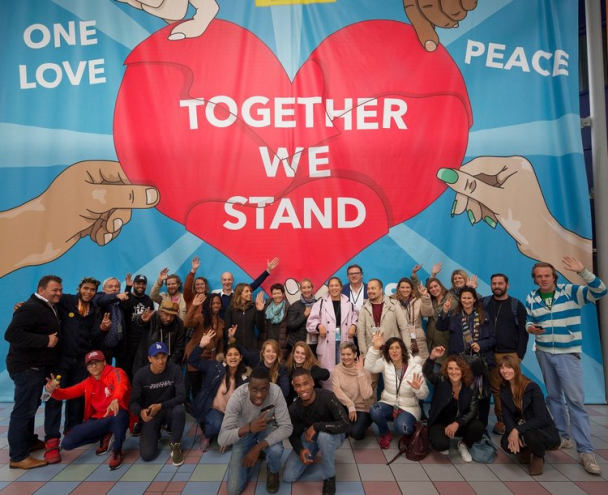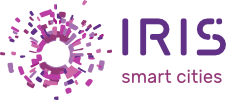
For five days between the 20-24 June 2018, the City of Amsterdam hosted one of the largest urban festivals in Europe. WeMakeThe.City was dedicated to a more collaborative and connected approach to ‘making cities better’ featuring 600 speakers and 30,000 participants over five days. Urbanist and researcher Namita Kambli was a roving reporter for IRIS on site.
As the world becomes increasingly urban, cities continue to be confronted with serious challenges concerning climate, health, safety, and inclusivity, among others. So what kind of city do we want to create together and live in as we navigate these challenges and opportunities for change? ‘Making Places’ was one such conference that tackled this question. It centred on innovative approaches to area development, in particular, on how people of all ages, backgrounds, and abilities can enjoy a place while also playing a role in its creation, identity, and maintenance. Conference speakers included Ethan Kent, senior Vice-President of New York based non-profit Project for Public Spaces, and Gordon Douglas, author and director of the Institute for Metropolitan Studies at San Jose State University, California. The event was moderated by citizen participation expert Natajsa van den Berg, and kicked off by Marieke van Doorninck, Amsterdam City Council deputy mayor for spatial planning, land-use, climate, and energy.
The mayor, who only took office recently, acknowledged that Amsterdam was both changing and growing, but her hope was to create a sustainable city free of fossil fuels, accessible and inclusive, with plenty of affordable housing as well as protected and improved green spaces. However, Van Doorninck admitted that the council did not have all the answers with respect to achieving this vision, and was hence keen to connect with people who have the skills to fulfil the council’s aspirations. She also extended an invitation to everyone else wishing to contribute, thus reinforcing the role of “people on the ground” in city planning.
The next speaker, Thomas Stellmach from TSPA, presented a summary of a workshop on “cities under pressure” chaired by the eminent urban theorist Charles Landry. It touched upon the predicament of nation states caught between quick capital flows and the permanence of physical places that do not – as yet – have the tools to adequately respond to these flows. Although there is a yearning amongst planners and city officials to make better cities, market forces and financial systems regularly counteract that yearning. This in turn exacerbates problems, such as inequality. Workshop participants therefore agreed upon the need for a new system wherein development is value-oriented and not just profit-focussed. Such a system would, for example, align and price social capital into any new development. This type of a system would also tie-in to a more holistic understanding of city planning, and be flexible enough to adapt to a digital world.
The theme of a value-oriented system was carried forward by Ethan Kent who called for place-led area development. Referring to the deputy mayor’s goals, he affirmed that we do not, at present, have models to achieve her vision. This is because city planning currently occurs in silos, leaving area development to designers. However, design alone is not the answer. To illustrate his point, Kent used the example of the Guggenheim museum in Bilbao. Despite being an iconic building, the Guggenheim pays little attention to its surrounding context, consequently detracting from the public realm and failing to generate any civic value. He maintained that it is ultimately public spaces which make a development work and not vice-versa. Moreover, a place-led approach is unfailingly community-driven and depends on the help of community champions or “zealous nuts”. In this way, placemaking taps into the capacity of communities all the while generating shared value in the public realm. Kent warned that without a place-led approach to planning, we would not only fail to bring about systemic change but also perpetuate existing challenges.
Peter Heuvelink, director of development firm AM Northwest, reiterated the importance of a collaborative approach to area development. Referring to his own family tree, Heuvelink explained that AM Northwest follows an interactive process approach at different scales – home, street, neighbourhood, region, city – to identify the DNA of a place. In so doing, place becomes the anchor of any new development, accordingly generating added value.
After a short break, the first four speakers’ points were beautifully summed up by word artist Ike Krijnen – IG Karfield through his statement, “…stardust maketh humankind and it is to stardust we must fit our plans”.
Adding their insight next was Hans Karrsenberg, founder of the urban development company STIPO, who called for a reframing of city-making discussions. He urged the audience not to think of planning in terms of pre- or post-global financial crisis but to instead consider the new paradigm of “being a city”. Whereas the earlier model of “making a city” involved a linear process that saw planners develop greenfield sites with few, if any, stakeholders, the new model occurs in urban areas with multiple urban actors. As a result, the new paradigm necessitates the accommodation of various stakeholders’ inputs and wishes, thereby making the process more interdisciplinary albeit complex. Mr. Karrsenberg reiterated that this is also why we need new models of city planning that are neither top-down nor bottom up, but middle-out.
Expert panels around the main conference themes followed: navigating stakeholders in complex landscapes; common value proposition; and societal value creation. Each of the panellists drew on their own experience to draw several broad conclusions. The first panel comprising Ekim Tan, founder of Play the City; Saskia Beer, founder and director of Transformcity; Martijn de Waal, author and professor at the Lectorate of Play and Civic Media at the Amsterdam University of Applies Sciences; and Michel Vogel, initiator of online platform Gebiedeonline, agreed that collaboration was key to the success of an area’s development. They noted that one of the ways of facilitating collaboration between different stakeholders was through the formation of collectives. This panel also asserted the need for new methods of citizen engagement, such as gaming, and for new business models that support public value creation.
The second panel included Chantal Robbe, senior advisor at Stadkwadraat; Rozemarijn Stam, researcher at BRAND the urban agency; Gerard Roemers, senior consultant at Metabolic; and Hans Karssenberg. The panellists concurred with the view that a solid base of community champions was critical to the success of a project. Together, they discussed possible new business models that could maximise place value in terms other than financial. The third panel on societal value creation brought together Fulco Treffers, award-winning architect from 12N Urban Matters; Sugandha Gupta, urban designer at Placemaking Plus; Martijn Rengelink from the municipality of Almere; and Peter Heuvelink. This panel highlighted the value of the connections established by bringing people together around a table and by cultivating a sense of ownership. To this end, they recommended the use of new technologies, which they believe are underexplored as citizen engagement and city-making tools.
The conference drew to a close with a few final remarks by Ethan Kent and Gordon Douglas. They cautioned that while it is good to embrace technology, it is imperative to be conscious of the digital divide and ensure that everyday citizens are always brought into the conversation. With respect to the conference’s main theme of innovative approaches to area development, Kent and Douglas concluded that it is time to create new models for place-led governance. To this end, they recommended that we ourselves should become part of a collective.

This program was held at Pakhuis de Zwijger and made possible by AM
23 Jul 2018

